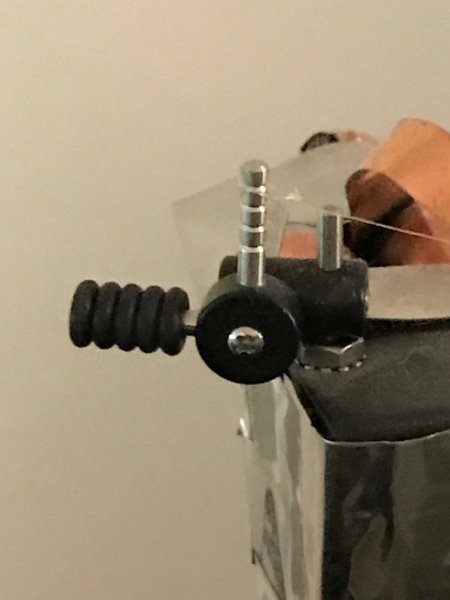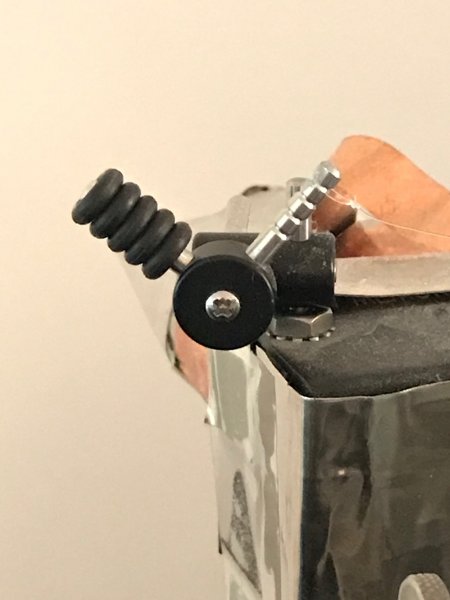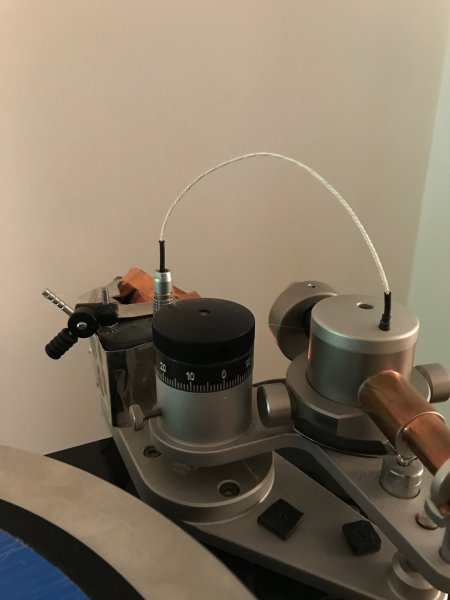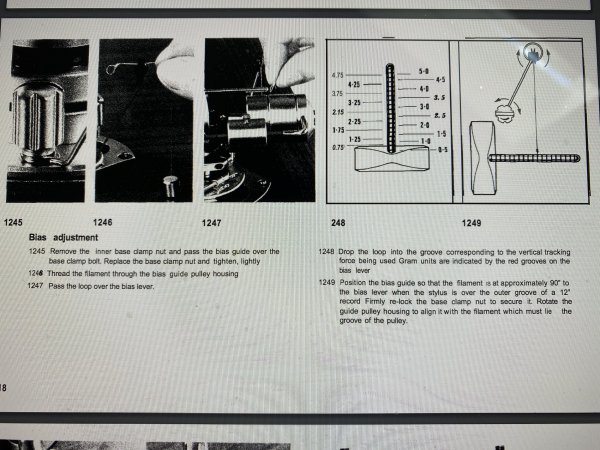Phil, let me see if I can address these questions in a simple way, and please bear with me...
1) Regarding the "how much anti-skate force do I exert": on the VPI arm, and because the anti-skate device is rotational as shown below, it will require some math. Below is the anti-skate at the lead-in and lead-out grooves, and as you can tell, it will vary slightly, with less force applied at the lead-out grooves because of the angle of the anti-skate lever:
View attachment 65037
View attachment 65038
Those rubber weights are 0.116g each, and five of those give me (as I said yesterday) roughly 0.6g that I wanted to apply. However, because this is a lever device, the actual force exerted mathematically depends on the offset of those weights away from the pivot point (that screw) - the further away, the more the force. In my case, since I have five, the distance is averaged out and is calculated based on the 3rd disc. In addition, the other arm has significant mass of its own, which would further reduce the anti-skate force, when it rotates
I did some measurements and rough calculations, and the maximum force (in the lead-in grooves) would be roughly 28% the VTF of 2.3, or 0.65g, very close to the ratio vdH recommends.
Now, regarding the varying force as the arm moves and anti-skate rotates... one might be tempted to say that this device, as is, is flawed; however, there is at least one more parameter here, and that is the wires coming out of the arm as shown below, which as I mentioned yesterday, I can demonstrate with the blank disc that they have an anti-skate effect of their own, at various places along the tracing arc. What actually happens is that those wires ADD additional anti-skate force towards the center of the disc, and therefore, the rotational anti-skate device's reduced force compensates for that. Again, the blank disc has been very valuable in figuring out all kinds of things about mechanical behavior.
All in all, the end result is closer to a linear *total* anti-skating force across the tracing arc than I had originally thought. This being vinyl analog, EVERYTHING is an approximation, and here we are.
View attachment 65039
2) Regarding the question about where to put that anti-skate thread: I use the position which results in the least rotational travel, for minimal variability in the force
3) Regarding the question, well, how do I know how much actual force am I applying with any arm, or those arms with a dial: I don't think you can, at least not easily. In my case again, I *think* I have fairly correctly calculated it, but I am not sure it's entirely accurate
4) Regarding your guess that those rotational dials differ from arm to arm: yes, I would agree.
The bottom line, for me, is this:
- vdH recommends a percentage of VTF for anti-skate
- SME uses a percentage of VTF for anti-skate
- my experiments with the blank disc show two things:
a) that the wires exert a force of their own which is independent on VTF; and
b) that anti-skate requirements will vary with VTF (the higher the VTF, the faster the arm will glide, and the more anti-skate it will require).
So, yes, a blank disc is invaluable, to understand mechanical behavior.
They all seem to paint the same picture: some anti-skate is required and it's dependent on VTF plus stylus shape as others pointed out (including vdH). The "how much force" should really be left to the ear, and the thing to look for is reduced distortion.











